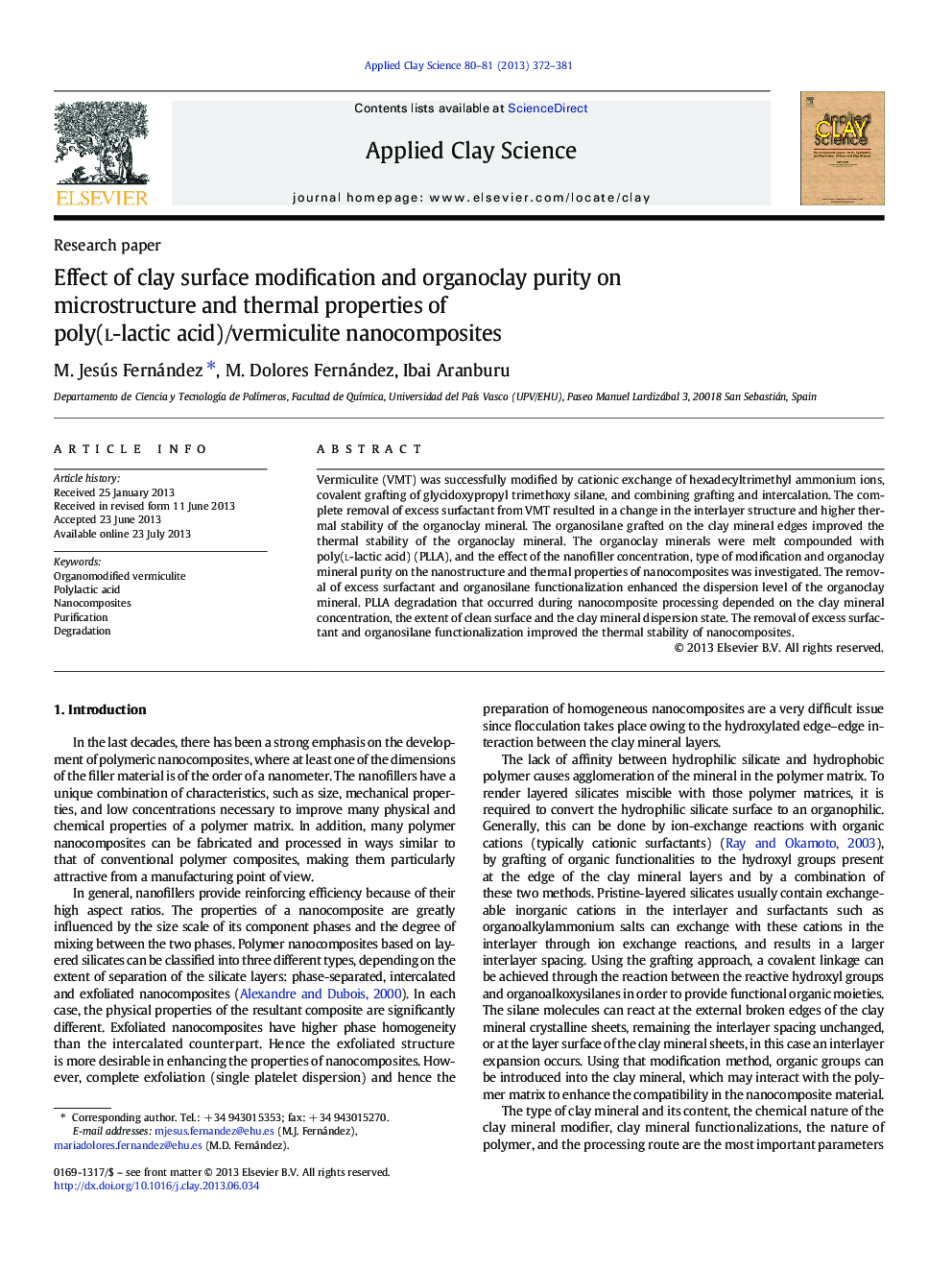| Article ID | Journal | Published Year | Pages | File Type |
|---|---|---|---|---|
| 8047536 | Applied Clay Science | 2013 | 10 Pages |
Abstract
Vermiculite (VMT) was successfully modified by cationic exchange of hexadecyltrimethyl ammonium ions, covalent grafting of glycidoxypropyl trimethoxy silane, and combining grafting and intercalation. The complete removal of excess surfactant from VMT resulted in a change in the interlayer structure and higher thermal stability of the organoclay mineral. The organosilane grafted on the clay mineral edges improved the thermal stability of the organoclay mineral. The organoclay minerals were melt compounded with poly(l-lactic acid) (PLLA), and the effect of the nanofiller concentration, type of modification and organoclay mineral purity on the nanostructure and thermal properties of nanocomposites was investigated. The removal of excess surfactant and organosilane functionalization enhanced the dispersion level of the organoclay mineral. PLLA degradation that occurred during nanocomposite processing depended on the clay mineral concentration, the extent of clean surface and the clay mineral dispersion state. The removal of excess surfactant and organosilane functionalization improved the thermal stability of nanocomposites.
Related Topics
Physical Sciences and Engineering
Earth and Planetary Sciences
Geochemistry and Petrology
Authors
M. Jesús Fernández, M. Dolores Fernández, Ibai Aranburu,
